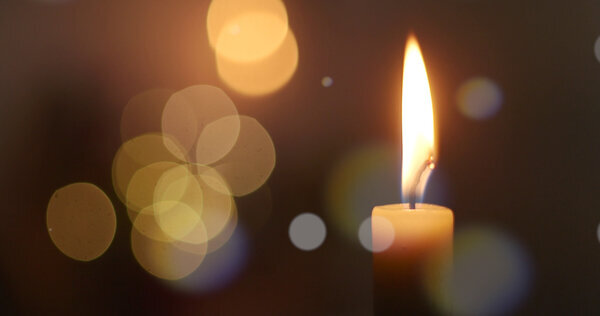Liturgical Symbols: Fire and Light
September 06, 2025 • Written by Vicki Klima

I hate it when the power goes down in my neighborhood at night. I like living with modern conveniences, most of which need electricity. I would be happy to read a book when there is no power, but candlelight is difficult for me to see the words and be comfortable. What would I have done in earlier times?
There would have been no light except through a fire or candle/torch type device. I would accept it because I wouldn’t have known there were other options. I most likely would have joined the practice of sleeping when the sun went down and waking up with the dawn. That sleep might have been better than what I currently do as a night owl, but I do have other choices for light and for entertainment.
I can imagine a time when night brought almost absolute darkness except for the moon and the stars. I can visualize the fear of predators, animal or humans, or even other dangers that might lurk unseen. I can picture what it must have felt like to see a light in the distance waiting for me, pointing out that I have reached home after a journey.
Take a moment to think about all the ways you have encountered light or fire today.
The light that pierces the darkness is a symbol used for Christ in our worship. “What came to be through him (the Word made flesh) was life, and this life was the light of the human race; the light shines in the darkness, and the darkness has not overcome it.” John 1:3b-5. The Paschal (Easter) Candle blessed at the Easter Vigil is the symbol of Christ who said, “I am the light of the world. Whoever follows me will not walk in darkness, but will have the light of life.” John 8:12. This Candle is the pillar of fire that led the Israelites out of Egypt and kept them from straying off the right path. Exodus 13:21-22.
Fire provides heat and light, it warms our houses, it cooks our food, it illuminates dark places, and it can create an atmosphere of security and well-being. It has been used in manufacturing, for powering steam engines, and in heating metal and glass to forge tools and durable parts for varied construction projects. The ability to harness fire was a major discovery in human evolution. Fire is also dangerous, of course, cannot always be controlled, and can have devastating results.
The symbol as used in our liturgies has multiple meanings. Christ is the light who conquers the darkness of sin and death. The symbol signifies life, guidance, and goodness. We are enlightened with knowledge. We have hope when we “see the light at the end of the tunnel.” Light brings comfort. Fire also brings purification: “I will refine them as one refines silver, and I will test them as one tests gold. They will call upon my name, and I will answer them; I will say, ‘They are my people,’ and they will say, ‘The LORD is my God.’” Zechariah 13:9.
Subscribe to Vicki Klima's Liturgy Blog!
Vicki Klima
Vicki, a retired liturgist and parish administrator, is passionate about enriching Catholic worship. She authored Participation of the Heart to help Catholics engage more deeply in the Mass. With a Master’s in Pastoral Liturgy, she has led workshops, written for liturgical publications, and continues to inspire through speaking, writing, and her love of music and theater.
